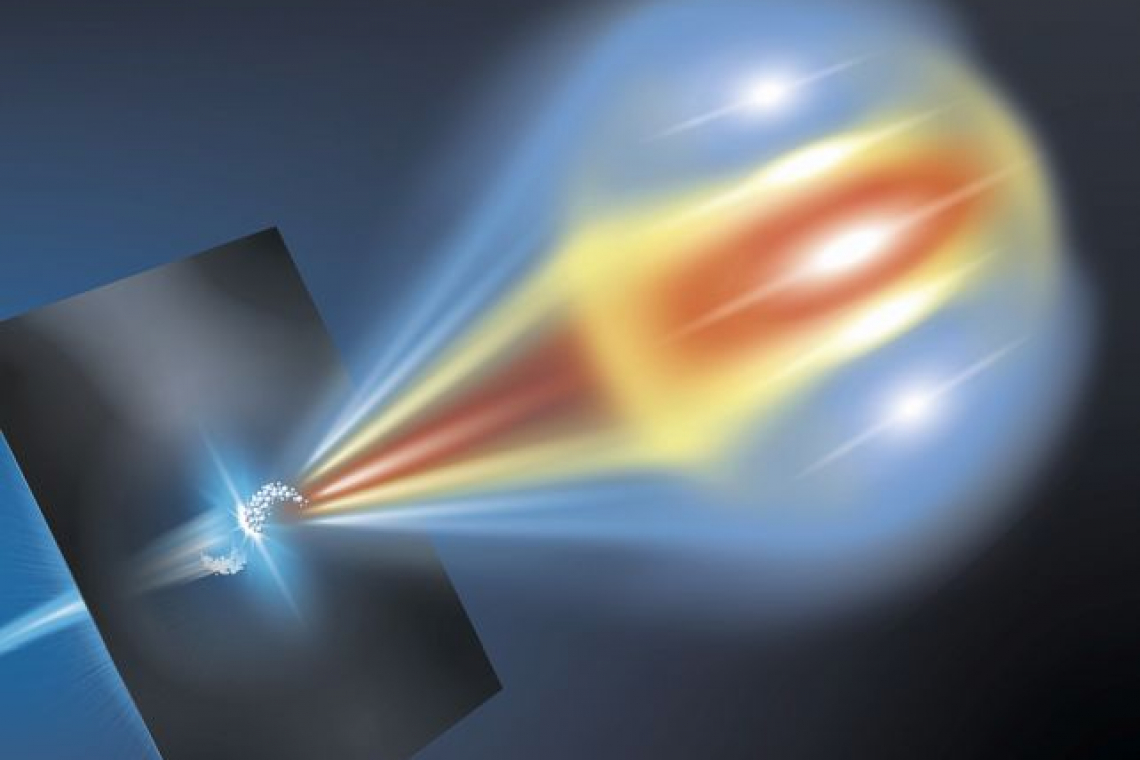Laser plasma accelerators are more space-saving than conventional systems, some of which are several kilometers long. However, in order to generate high-quality UV or X-ray light, the electron bunches coming out of a laser plasma accelerator must be very finely bundled and have defined properties. Until now, however, it has been difficult to measure these bunches accurately enough. Now a team from the Helmholtz-Zentrum Dresden-Rossendorf (HZDR) is presenting a new method that allows the extremely short electron bunches measuring just a few micrometers to be analyzed in detail. The almost light-fast electron bunches are sent to a thin metal foil. This sets the electrons in motion on the surface of the foil. As a result, they emit a signal that can be recorded by sensors. This signal can be used to precisely reconstruct what the electron bunches passing through the foil actually look like. The new method can control the shape and structure of the electron bunches much more precisely.


